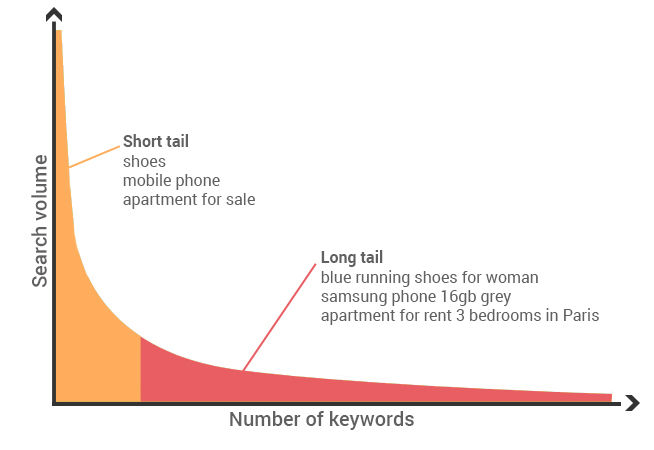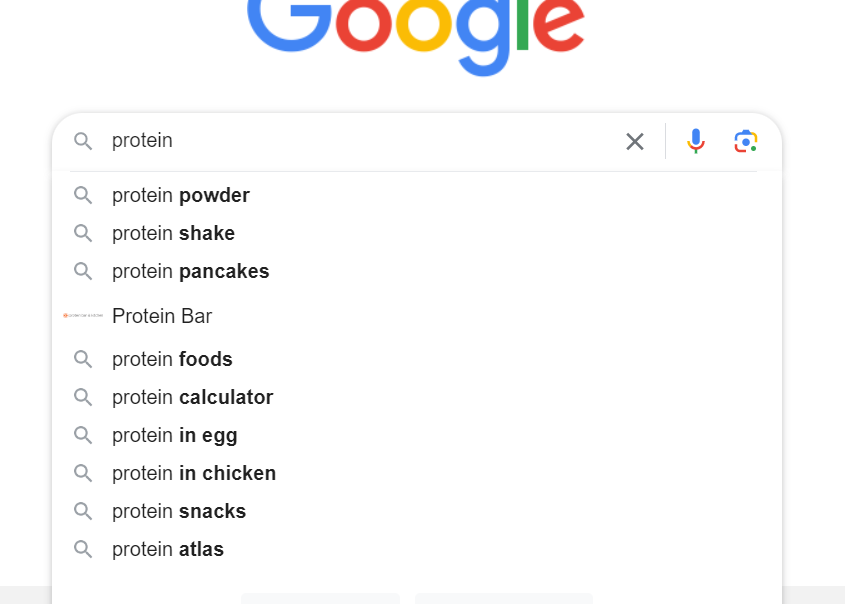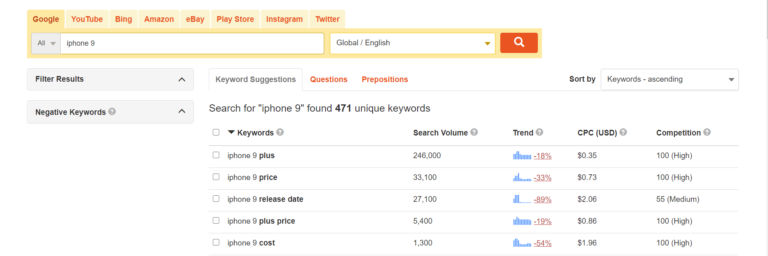Blog article
What is long-tail SEO?

It would be nice to rank highly for generic searches, wouldn’t it?
But competition online is fiercer than ever.
Consider this: There are around 400 million active websites on the Internet. Many of the ones in your niche are larger than yours, too.
Consequently, implementing long-tail SEO into your SEO strategy is the key to success in today’s business environment.
Long-tail SEO explained
Long-tail SEO is a tactic you can roll into your overall SEO strategy to drive targeted organic traffic to your site.
It involves finding and targeting long-tail keywords. These keywords have lower competition and search volume than head terms (aka short-tail terms)—those generic search terms like “kitchen table” or “office chair”—yet have high conversion rates.
But what exactly makes a keyword “long-tail”?
What are long-tail keywords?
There are three main sections to the Search Demand Curve—a model describing the types of keywords people look for and how often they’re searched.
- The fat head
- The chunky middle
- The long tail
Long-tail keywords are located in that (you guessed it) “long tail” section. As the name implies, these are longer keyword phrases—generally more than three words. They’re much more specific, and customers often use them in voice searches when they’re close to making a buying decision.
The length and specificity of long-tail keywords give them their low competition and high conversion rates.

They only have up to a few thousand searches per month, and yet there are near-limitless opportunities to target these keywords for traffic. After all, around 70% of all monthly searches are long-tail keywords.
Let’s look at an example of a long-tail keyword.
Say you sell protein powder. “Protein powder” is a head term since it’s pretty generic. There’s almost no way you’ll rank for it, given the large number of massive fitness websites and online stores.
On the other hand, “low carb milk chocolate flavor whey protein powder” is a long-tail keyword.
See how much more specific it is? This keyword narrows down the giant population of people searching for protein powder to a smaller audience of people who want a specific flavor and nutritional profile.
Consequently, it’s easier to rank for. Plus, the people who visit your site from this search are probably looking to buy, instead of searching for general information.
How to find long-tail keywords
Use Google autocomplete
Google autocomplete is an excellent long-tail research starting point. If you type in a head term, Google will suggest several of the top related searches—most of them being long-tail keyword phrases.

Back to our protein powder example: Typing “protein powder” into a Google search brings up autocomplete suggestions like “protein powder for weight loss” and “protein powder for weight gain.” Both of these are long-tail keywords.
Browse forums
One of the best ways to understand what your audience wants is to learn it directly from them on forums.
Facebook, Quora, and relevant subreddits are great places to start. You can also search for topic-specific forums and look at popular posts on those.
Not only will you find plenty of long-tail ideas but you’ll also learn more about your audience’s pain points and desires.
Talk with customers
Similar to the above, you can also go directly to the customers and talk to them.
One method is to interview customers. You can ask them what they like about your product and if they have any questions about it.
You can also send out surveys to gather large amounts of shorter feedback.
Keyword research tools
Of course, you should also try keyword research tools. Most of these tools let you search for a generic keyword and return plenty of results for long-tail keywords.

The benefits of long-tail keywords SEO
Outranks the competition
First and foremost, targeting long-tail SEO keywords helps you outrank your competitors. These low-volume keywords are simply easier to rank for.
Rank highly for several of them, and you’ll pull in plenty of solid organic traffic.
Improves ROI
Since long-tail keywords are easier to rank for, your team doesn’t have to spend as much time working on ranking for them. Your team now has more time for other marketing tasks.
You’ll save money, too, since you won’t have to hire as many people for marketing.
Combine these time and money savings with higher conversion rates, and you’ll see a higher ROI on your SEO efforts.
Optimizes for voice search
Talking is a lot easier than typing, relatively speaking. People naturally search with long-tail keywords if talking to their smart device.
When you consider that voice commerce is expected to crest $40 billion by 2022, optimizing your business for long-tail keywords now will pay off.
Provides plenty of content ideas
Do you use content marketing as part of your strategy? Long-tail keywords provide a nearly endless number of content ideas.
You can find out what kinds of long-tail topics people are talking about, then create blog posts and other forms of content around those.
Circling back to that protein powder example one more time: Instead of writing an article about “protein powder,” maybe zoom in on a specific use for protein powder. For example, target “whey protein powder for weight gain.” You could write an article on using whey protein powder to gain muscle, which is a popular topic in fitness circles.
Focus on the long tail
There’s no need to try to rank for crowded head terms. Long-tail SEO offers you boundless opportunity to zoom in on customers that are likely to buy from you.
The problem is, incorporating an SEO strategy in-house can be an expensive and time-consuming pursuit—but that’s where Verbolia can help.
Read our case studies to check out how we helped create hundreds of thousands of SEO-optimized landing pages with ease on a massive classifieds site.
How can Verbolia help your e-commerce platform.


